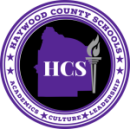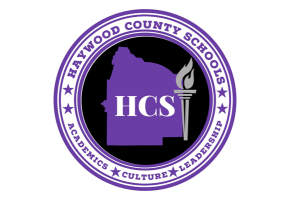Academic Focus – East Side Elementary
There’s a big difference between being great once and being great consistently. In any profession, being successful once or twice isn’t all that difficult. A professional athlete can have a game where everything clicks. A salesman can close a big account on a good day. A teacher can hit all the right paces in a lesson with just the right amount of rigor where students learn and are challenged at the same time. Singular wins aren’t that difficult to achieve; winning over and over and over again is what is challenging.
Last school year, third grade students at East Side Elementary outpaced the national average in Literacy growth on the TCAP assessment. The academic gains shown by those students were astronomical. It was a testament to the teachers at ESE as well as the students. Now, the real challenge begins – how to continue the great work that is rooted in Haywood County Schools’ mission and cultivate that learning to enable students to move forward with everything they need to continue their academic journey.
Andrea Baynes is the Instructional Facilitator at East Side Elementary and is part of the leadership team at ESE who helps support the excellent educators at the school. Like all schools in HCS, ESE has academic pillars which are the foundation of their mission to know every child by name, strength, and need. Through these pillars, the academic focuses of the school come into view.
ESE uses benchmark data from the AimsWeb and IReady diagnostic tests which are given three times each year to measure student progress. Based on that data, students receive concentrated, individualized instruction in order to continue to move forward on their path to standard mastery. As is the case at the beginning of every year, the first benchmark tests are given shortly after students start the year.
“Our year has started out great; we’re off to a strong start,” Andrea said. “It’s hard to compare our benchmark tests with each other because they measure different things; AimsWeb is a skills based assessment, and IReady measures the depth of understanding a student has concerning the state’s standards.”
Giving both benchmark tests in reading and math has tremendous value because the data will show multiple ways that learning can be supplemented. Digging into that data and disaggregating that data is one of Andrea’s duties in her role as Instructional Facilitator. Last year, ESE dug deep into the data and formed their instruction based on the data from the benchmark tests. The results at the end of the year spoke for themselves.
“Last year, we put a lot of emphasis on small groups. Teachers were working closely with students in small group settings. We protected our 90 minute learning blocks of uninterrupted instructional time. We have excellent teachers who are dedicated to our students,” Andrea explained.
Not only are teachers and students participating in the learning process in traditional academic classes like ELA and Math, but every student at ESE also participates in a 45 minute intervention class that is tailored to fill the gaps in students’ learning as well as continue to push high-achieving students forward.
“We have a 45 minute intervention block that every child attends daily. We work with students based on where they are. It’s just as important to reach out to our high-achieving students as it is to our students who are struggling because every student needs to be consistently pushed forward regardless of where they are,” she explained. “We have a variety of curricula we use for intervention that’s different from what we use in our general education classes.”
The curriculum used in general education classes in ESE and across HCS is high-quality, equitable, and joins academic subjects together in a cohesive way.
“For our Math curriculum, we use IReady. For ELA, we use Learnzillion,” Andrea explained. “We’ve used Learnzillion for four years. LZ does a great job of bringing in different cultures into the reading as well as real world experiences and cross curricular activities. There’s a lot of history and social studies embedded in the ELA curriculum.”
At the core of the ELA curriculum is the push for students to interact and engage with the text in an active way. In third and fourth grade, however, students find themselves at very different levels when it comes to reading and reading comprehension.
“With third and fourth grade students, literacy falls on a broad spectrum. It completely depends on the child at that moment,” Andrea said. “We have some students who struggle to read and decode the words in a text and some that can read like the wind and comprehend everything a text is saying. That’s why it’s so important to meet students where they are.”
Because student reading levels are so diverse, professional collaboration among teachers and building leaders is crucial. At ESE, teachers and leaders meet in The Tap Room and attend Professional Learning Communities (PLC’s) where they evaluate the most effective ways to teach the state standards of each subject to their students.
“The focus of our PLC’s is always on students – how do we make sure students can master the state standard being taught that week? How are we focusing on building success criteria? Success criteria gives students a voice; it allows students to communicate how and where they’re struggling,” Andrea said.
Not only are students given a voice in areas where they may feel they are struggling, students are also literally given a voice in the classroom.
“When we visit classrooms, we want to see students engaged in learning. We want to see teachers facilitating learning. We want to see students talking to each other about content. We want students to own their learning,” Andrea explained. “When students talk with one another, they tend to build on ideas learned in class. Students can also be the best teachers for another in some cases; they can communicate to their peers in ways teachers can’t sometimes. We teach students to use accountable talk which reinforces learning, but also teaches students positive and effective ways to communicate.”
Communication in all areas of life and education is a necessary component for consistent success. At ESE, communication is a focal point that has led to a staggering amount of academic growth. As this school year begins to unfold, the expectation is that the growth continues and gaps in learning continue to be addressed.
“We really want to continue to improve our scores and really look at our sub-groups. We started an IReady Math lab to improve our Math learning,” Andrea said.
In the end, however, teachers and building leaders know that consistent learning will continue to occur if the work done by the teachers and staff is purposeful and consistent.
“We always focus on three words here – Engage, Communicate, and Reflect. We added a word this year – Enjoy. We want our students and teachers to really enjoy the process of learning. We work hard; we play hard.”


